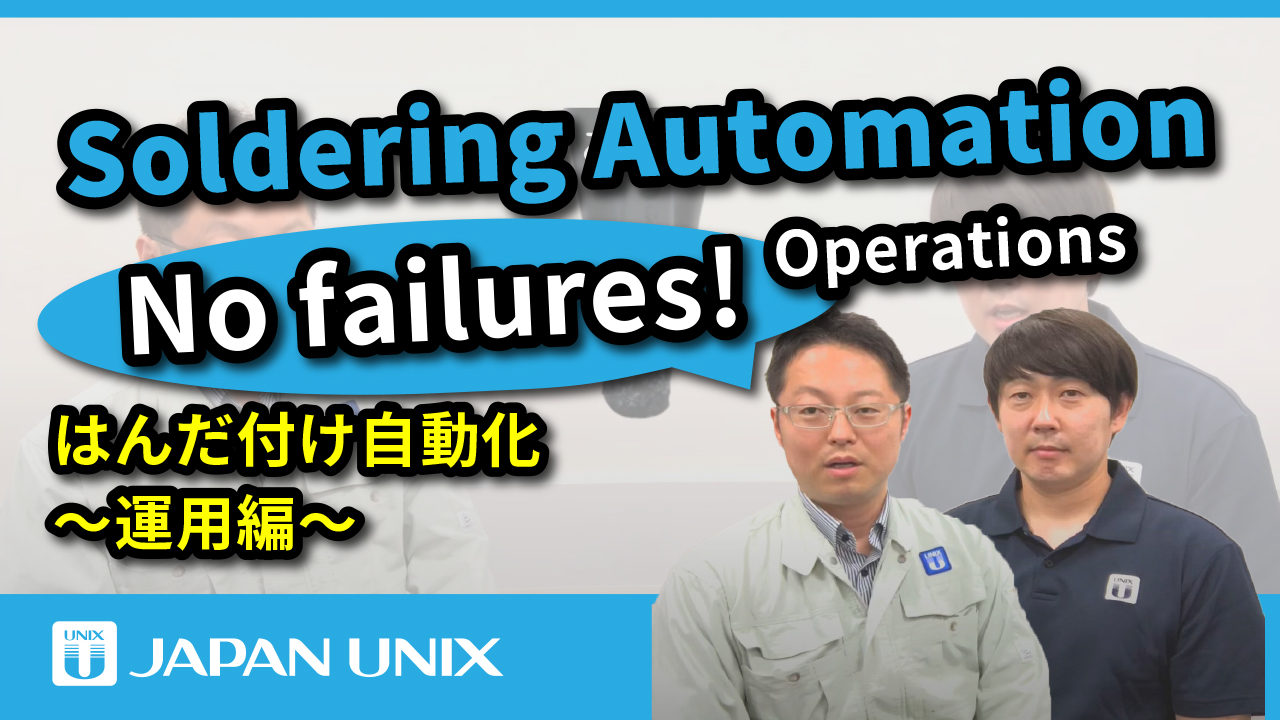
Automation by Soldering Robot without Failure. -Operation- [YouTube Tech Article]

YOUTUBE Column 1st Edition!
What is the automation with soldering robots that ensures no failures?

Watch the video of this column here
Greetings
Unokuchi Hello, everyone. I’m Unokuchi from Japan Unix.
Obata I’m Obata from Japan Unix. Nice to meet you.
Unokuchi Today, we have Mr. Obata from the sales department with us. So, I would like him to teach us some points on how we can operate smoothly. Thank you for being here today.
Obata Nice to meet you too.

Tips for Maintenance of Soldering Robots
Unokuchi Well then. Could you please share some tips for maintaining soldering robots and operating them effectively?
Obata First, please check three things during maintenance. The first is to ensure that the tip is in good condition.
Unokuchi Condition of the tip.
Obata Next is to check the solder feeding position.
Unokuchi Solder feeding position.
Obata Yes. And finally, check the temperature of the tip.
Unokuchi Tip temperature. These are the three things to check.
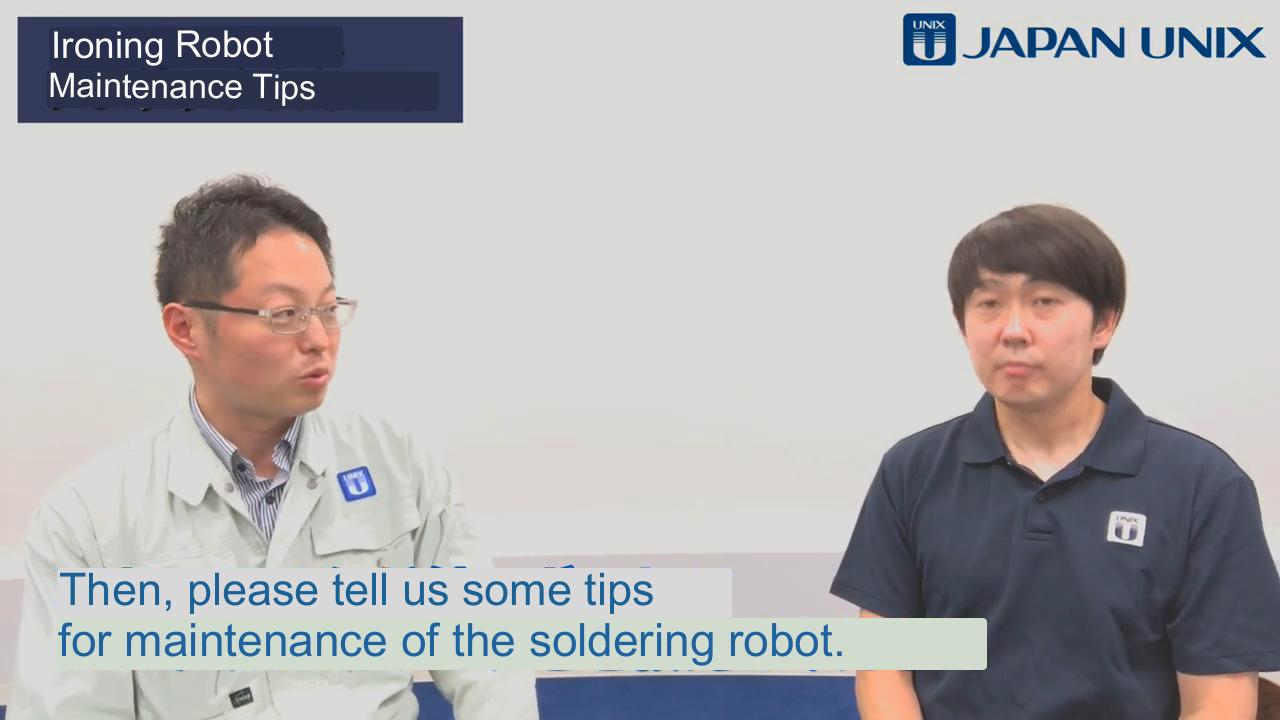
Condition of the Tip
Unokuchi First, what methods are necessary to improve the condition of the tip?
Obata Well, for improving the condition of the tip, there is often the presence of carbonized flux residue on the tip. This carbonized residue adheres to the left and right sides of the tip, near the wetting face, and it carries away heat.
Unokuchi If heat is carried away, then the heat won’t transfer properly.
Obata It also dirties the board with flux residue.
Unokuchi And it remains there.
Obata It’s a very troublesome issue.
Unokuchi So, what methods are there to clean it effectively?
Obata Well, there are brushes or silicon brushes that automatically clean the robot. We also have a cleaner where you can insert the tip and remove the carbonized residue.
Unokuchi It cleans automatically.
Obata Alternatively, it can be done manually by the operator using a brass brush or visually removing it with a scale.
Unokuchi The important thing is to keep the tip clean, right?
Obata Yes, by keeping it clean, the tip will perform well.
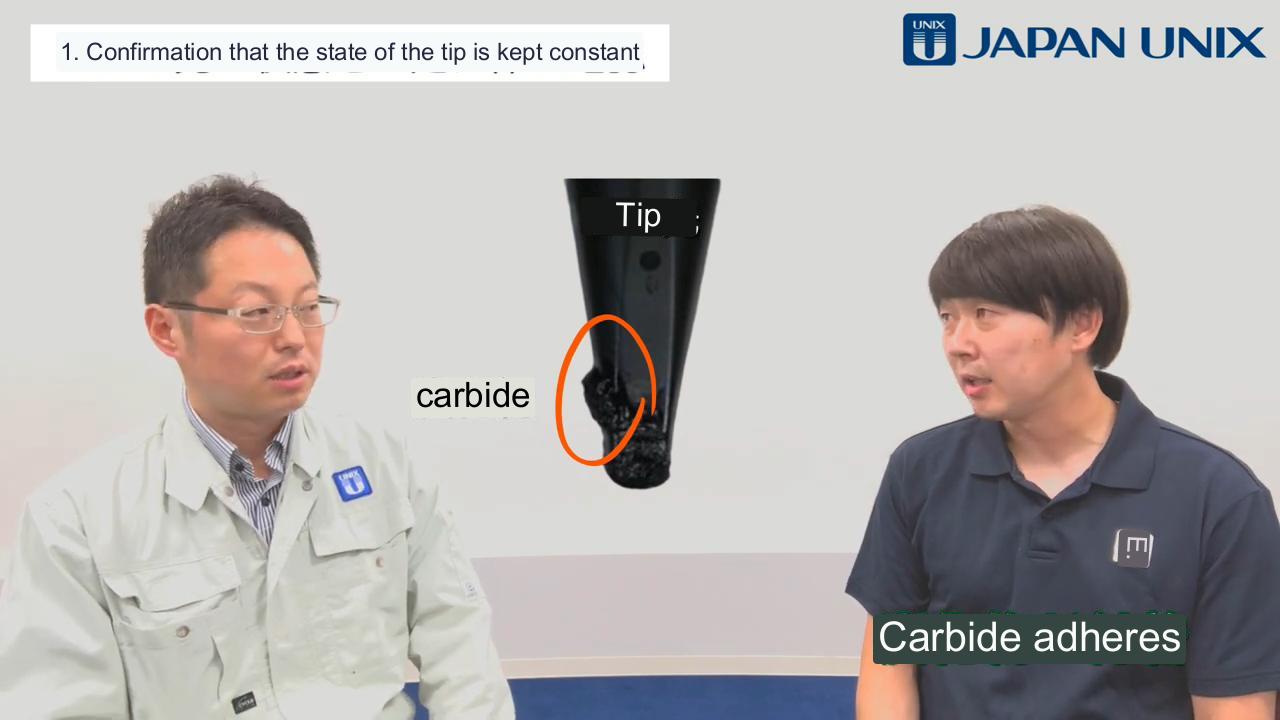
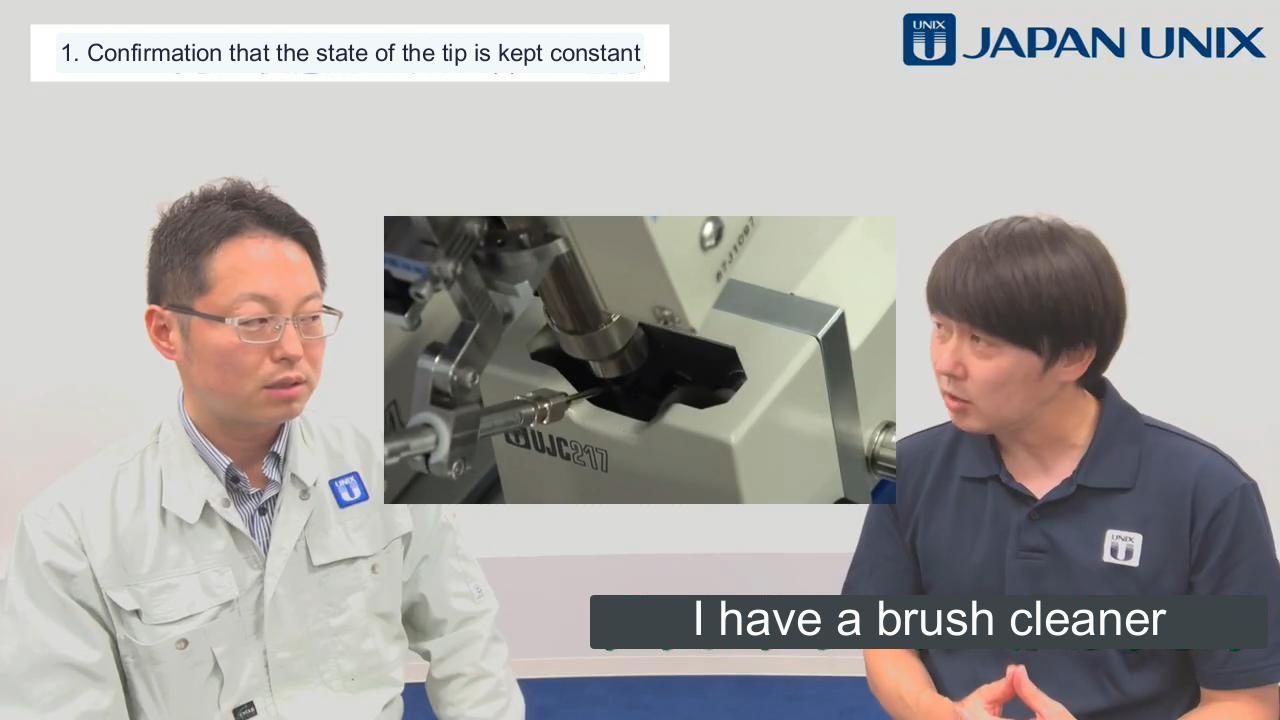
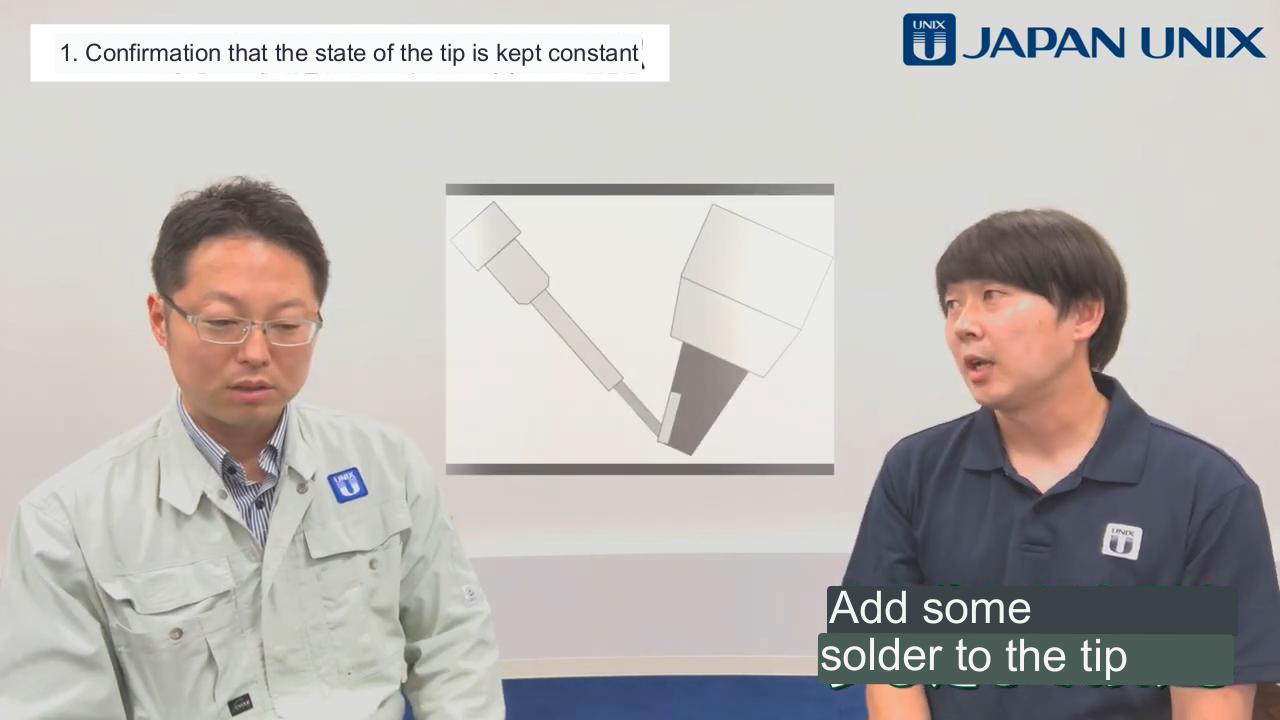
Unokuchi Is there anything else
that should be done for the tip?
Obata Considering the tip’s lifespan, after soldering, it’s recommended to let a bit of solder drop on the tip. This helps prevent oxidation and extends the lifespan of the tip. When the soldering is not being done and the tip is in a standby state, it’s important to leave some solder on the tip for storage.
Unokuchi That should always be done.
Obata Yes, it’s easy to forget, but it’s an important step.
Unokuchi If it oxidizes, the solder will repel. So, it’s essential for everyone to do it.
Solder feeding Position
Unokuchi Now, let’s talk about the maintenance of the solder feeding position.
Obata The solder feeding position has a significant impact on soldering.
Unokuchi The way solder spreads differs depending on where it’s fed.
Obata There’s a component called a needle, similar to a syringe needle, that feeds solder to the tip.
Unokuchi It has a thin tip.
Obata Yes, our robots come with that component. It’s important to ensure that it’s always in a consistent position.
Unokuchi The solder feeding position should always be in the same location. If it deviates, the solder can flow in a distorted manner, right?
Obata Exactly. The solder can flow in a distorted manner, and the amount of solder during soldering becomes unstable. The solder feeding is the key to successful soldering.
Unokuchi The solder feeding position is a critical maintenance item, so it’s important to check if it’s consistently in the same position every day.
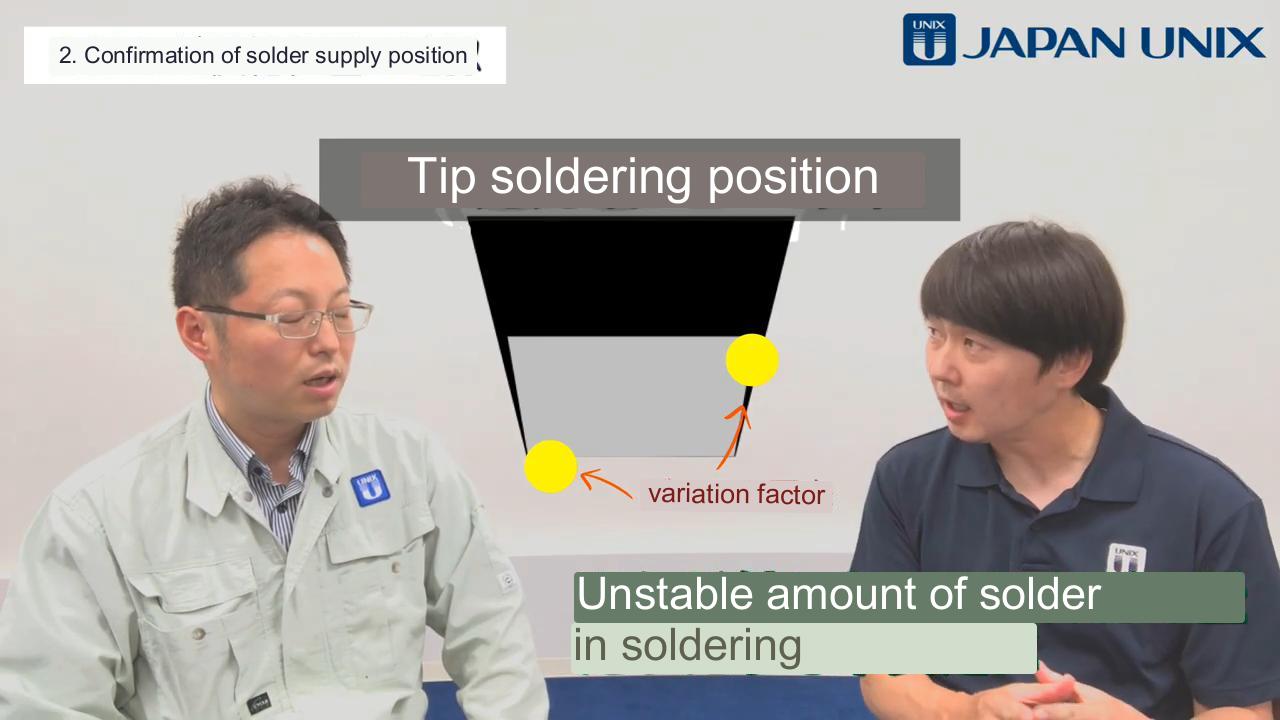
Tip Temperature
<
span class="label-primary">Unokuchi Now, can you explain the maintenance of the tip temperature?
Obata The temperature displayed on our soldering robot represents the temperature of the heater.
Unokuchi The temperature displayed is for the heater.
Obata Yes. However, there can be a difference between the displayed temperature and the actual temperature of the tip.
Unokuchi The displayed temperature and the actual temperature of the tip can be different.
Obata Yes. By adjusting this gap, it’s important to align the set temperature and the measured temperature of the tip.
Unokuchi The displayed temperature and the actual temperature at the tip. We want to measure the actual temperature of the tip and align it with the displayed temperature. By doing that, we can consistently solder at the same temperature range.
Obata Yes.
Unokuchi Understood.
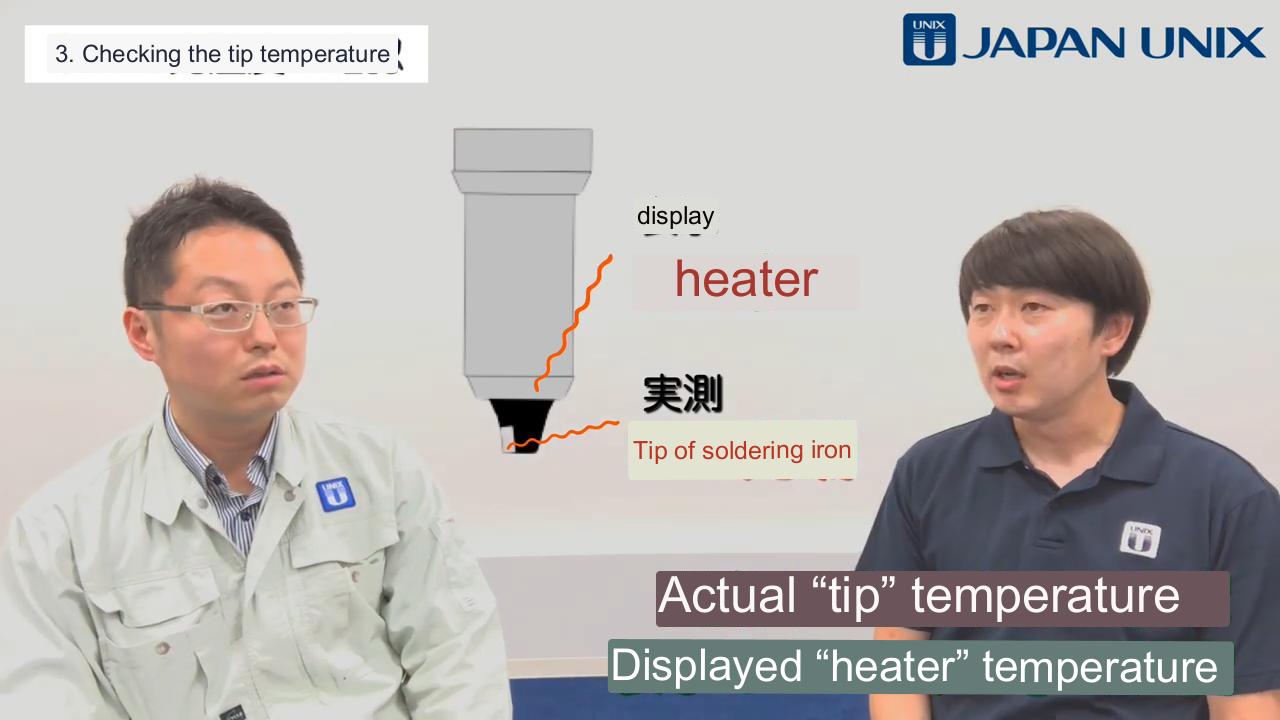
Conclusion
Unokuchi So, by performing these three checks, tip condition, solder feeding position, and tip temperature, we can achieve excellent soldering results.
Obata Yes.
Unokuchi Thank you very much.
Obata These three are the basics, but in the actual work environment, factors such as the heat capacity of the customer’s work or soldering characteristics may vary. It becomes a case-by-case basis. If you want to know more about various aspects, please feel free to contact us through our website.
Unokuchi If you have any questions, we have various experiences and can provide support. Please don’t hesitate to contact us. Thank you for today.
Obata Thank you very much.
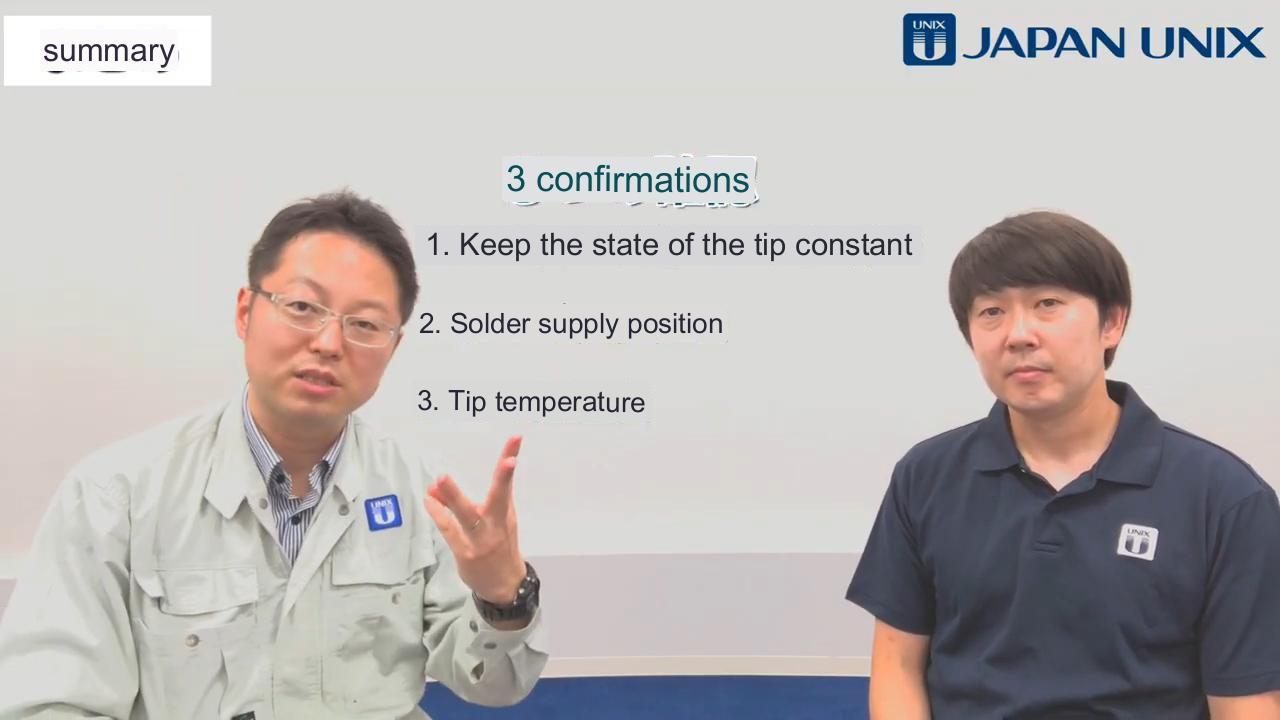
Related Products and Services
Please check here for related products and services that support the quality and operation maintenance of your production site.
Watch the Video of this Column


 日本語
日本語 中文
中文 Deutsch
Deutsch Español
Español